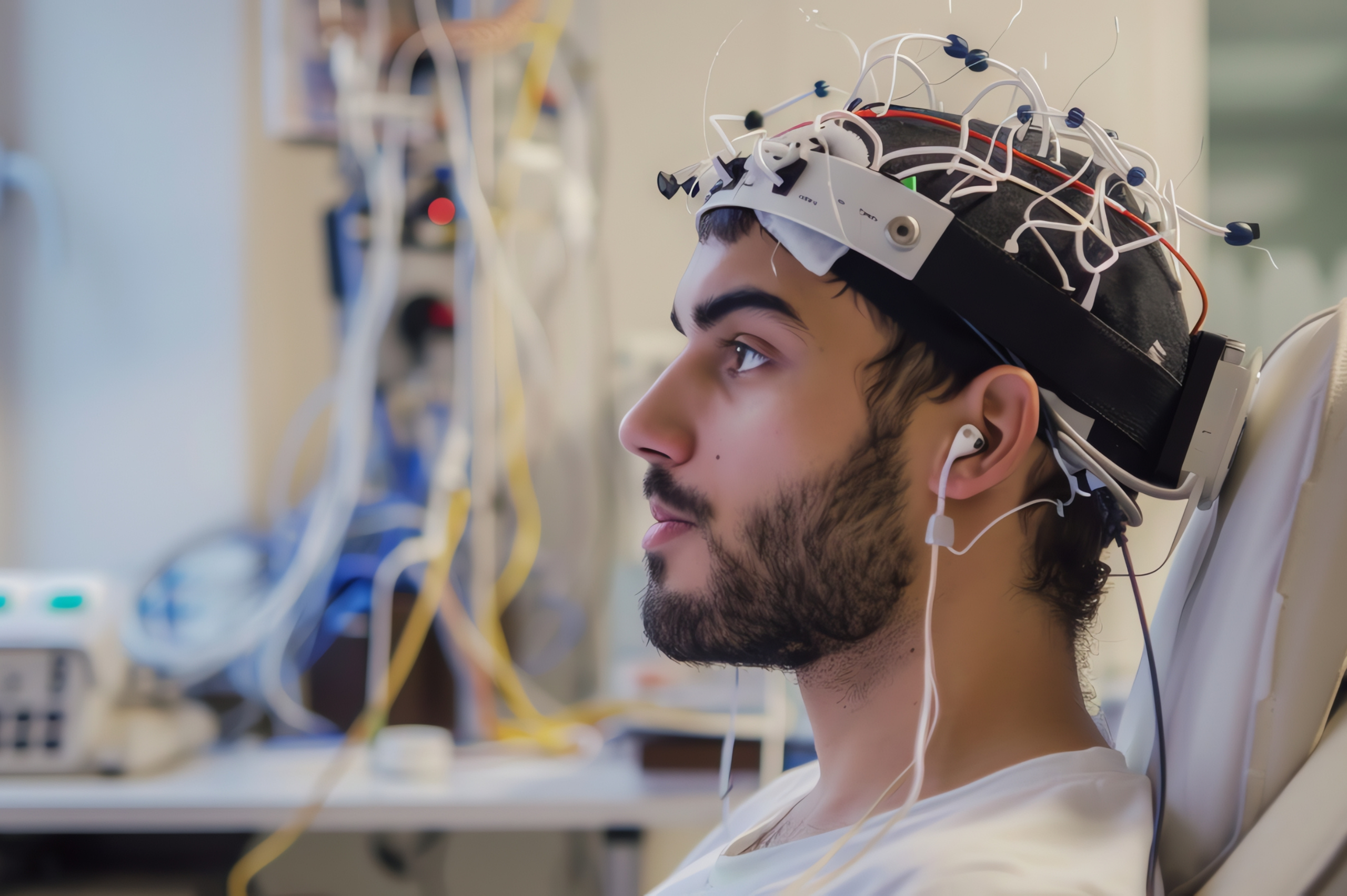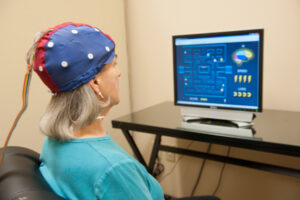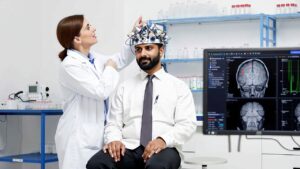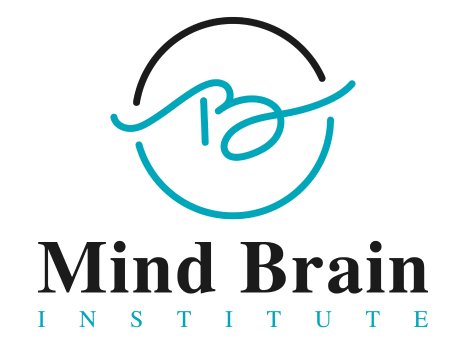
- Posted By Dr. Anuranjan Bist
- Comments 0
Neurofeedback and QEEG for Personalized Brain Therapy
Table of Contents
How Neurofeedback and QEEG Unlock Individualized Brain Training
Picture entering a room with ten individuals, all of whom are wrestling with anxiety. At first glance, their narratives might sound the same: nagging thoughts, fitful sleep, an uncomfortable gut sense that never quite dissipates. But here’s the catch: when you examine their brain activity, no two patterns are identical. Another individual’s brain may be racing too quickly in one section, whereas another’s is crawling along in another section. That’s where the actual challenge begins: if every brain is different, shouldn’t the treatment be as well?
This is the entire premise for combining Neurofeedback and QEEG. Rather than making an educated guess about what the brain requires, we get to actually measure its activity, pinpoint the trouble areas, and then train the brain to correct itself. For all those dealing with ADHD, depression, anxiety, or even insomnia, this method brings in highly individualized therapy that adjusts to their brain, not a cookie-cutter checklist.
Let’s take it apart.
What is Neurofeedback Exactly?
Neurofeedback is a type of brain training rooted in neuroscience. Think of it like a gym workout, but instead of lifting weights, you’re exercising your brain’s ability to regulate itself. Electrodes placed on the scalp record brainwave activity, which is then fed back to the individual in real-time through sounds, visuals, or games.

If the brain is doing good work (e.g., relaxed, focused waves), the system rewards it with positive reinforcement, maybe a video gets clearer, or a note sounds sweeter.
When it defaults to less useful patterns, the feedback shifts. Over time, the brain has learned, adapted, and consolidated healthier patterns of functioning.
But there’s a catch: unless we already know what patterns to train, Neurofeedback won’t work. And this is where QEEG comes in.
Enter QEEG: The Brain’s “Fingerprint”
A Quantitative Electroencephalogram (QEEG) is similar to getting a map of the electrical activity in your brain. Standard EEGs have been around for a long time to track brainwaves, but QEEG goes a step beyond. Rather than simply observing squiggly lines, QEEG employs sophisticated software to compare brain activity from region to region, frequency to frequency, and network to network.

The outcome? A colorful brain map that identifies:
- Overactive areas (e.g., excessive fast-wave activity in the frontal lobe, which might be associated with anxiety).
- Underactive zones (such as sluggish activity in attention zones, common in ADHD).
- Issues with connectivity (how well or badly, various areas of the brain are communicating with one another).
Each QEEG scan has a different story to tell. No two maps resemble each other, because no two brains process information in precisely the same manner.
Why Personalization Matters
Here’s the catch: symptoms of mental illness tend to be nonspecific. Anxiety, for example, might result from overstimulation of one brain region or understimulation of another. Two individuals with insomnia may be ill for two entirely different reasons neurologically. Both receiving the same treatment without further understanding, one may get better, and the other may not notice much difference.
By integrating Neurofeedback and QEEG, therapists are able to customize the treatment protocol to a specific individual. Rather than treating “anxiety” as a monolith, they’re able to address the actual cause of the dysregulation.
That’s the difference between guessing and knowing.
Step-by-Step: How QEEG Guides Neurofeedback
Here’s how it usually goes:
1. Initial Brain Mapping (QEEG Recording)
Electrodes are attached to the scalp in order to record brainwave activity as the person sits quietly. The recording is afterward examined using specialized software.
2. Data Analysis & Normative Comparison
Recorded brain activity is compared to large data banks of normal brainwave patterns. This identifies where the person’s brain differs from “normal” functioning.
3. Identifying Key Targets
Regions that indicate overactivity, underactivity, or weak connectivity are identified, and these become the targets for training.
4. Constructing the Neurofeedback Protocol
Based on the QEEG findings, an individualized neurofeedback program is constructed. For instance:
- If the brain is generating excess rapid beta waves associated with anxiety, training may target the amplification of soothing alpha waves.
- If the brain has difficulty sustaining attention, protocols can be designed to reinforce prolonged generation of mid-range beta activity.
5. Training & Adjustments
In sessions, the individual works with feedback tasks (video watching, video games, or sound listening) as their brain waves are recorded. Progress is monitored, and protocols are adjusted according to continual outcomes.
6. Follow-Up Mapping
Following a series of sessions, another QEEG can be conducted to assess progress and further refine the therapy.
This process guarantees that the therapy remains adaptive and targeted.
Who Can Benefit from Neurofeedback and QEEG?
The uses are widespread. Clinical research and experience indicate benefits for:
- ADHD and Attention Disorders: enhancing concentration and minimizing impulsivity.
- Anxiety and Stress: soothing overactive parts of the brain.
- Depression: stimulating underactive networks involved in mood control.
- Sleep Disorders: normalizing brain rhythms for improved sleep.
- Traumatic Brain Injury (TBI): facilitating recovery from interrupted brainwave activity.
- Peak Performance Training: employed by athletes, business leaders, and creatives to maximize brain performance.
By individualizing protocols, individuals tend to see improvement not only in symptoms but also in general resilience and regulation.
What Makes QEEG-Guided Neurofeedback Different from Standard Approaches?
If you’ve ever attempted mental health medication, you’re aware that it can be trial and error, tinkering with dosages, changing drugs, waiting weeks to notice effects.
Neurofeedback based on QEEG turns that around. Rather than firing away in the dark, practitioners have specific data to indicate why specific symptoms are presenting and where the imbalance is occurring.
That translates to:
- Fewer guess-and-adjustments
- Targeted results
- Objective measurement of progress
It’s like having a navigation system for your therapy process rather than stumbling around with a paper map.
The Science Behind the Practice
Brain therapies can sound just a little too good to be true sometimes. But the science behind Neurofeedback and QEEG is based on decades of research.
- Studies demonstrate measurable gains in attention, mood, and cognitive flexibility following QEEG-guided neurofeedback training.
- The American Academy of Pediatrics has designated neurofeedback as a “Level 1 – Best Support” treatment for ADHD.
- Advancements in brain imaging and computational modeling increasingly confirm how certain brainwave patterns are associated with symptoms and functional results.
Research is still being conducted, and Neurofeedback is not a magic bullet; the mounting body of research affirms its place as a strong, non-invasive treatment modality.
What a Session Feels Like
If you’re wondering about the experience itself, here’s what clients often describe:
- Completely non-invasive: No shocks, no pain, just sensors recording brainwaves.
- Interactive and engaging: Watching a movie, playing a game, or listening to music while the brain “learns.”
- Gradual shifts: Changes build over weeks, much like physical training. Many report better sleep, calmer moods, sharper focus, and an overall sense of balance as sessions progress.
At Mind Brain Institute, we usually say to clients: Neurofeedback is not about cramming the brain into something unnatural. It’s about training the brain to remember its own best rhythms*.
The Future of Personalized Brain Therapy
Neuroscience and technology are evolving very quickly, and the union of Neurofeedback and QEEG will become increasingly strong. Just think about merging real-time brain mapping with artificial intelligence, or merging neurofeedback with other interventions like TMS (Transcranial Magnetic Stimulation) or mindfulness training.
The future is one of more integrated, data-driven efforts to sustain mental health, one that celebrates each brain’s individuality instead of reducing it to wide brackets.
Final Thoughts
The elegance of bringing together Neurofeedback and QEEG is its customization. Rather than addressing symptoms in a vacuum, it delves into the source of how the brain is operating and then assists it in regaining balance.
No two individuals respond the same way to stress, concentration, or mood. And no two brains should be treated the same way, either. Under QEEG-guided neurofeedback, therapy is less about labeling and more about helping each brain reach its full, individual potential.
This is the view of the Mind Brain Institute. By this individualized, science-informed way of maintaining brain health. When therapy is tailored, the outcome can be nothing short of transformative, not only for the brain but for the life it leads.


